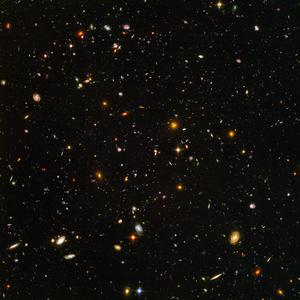Glossarbegriffe: Kosmos
Description: Der Begriff Kosmos impliziert die Erhabenheit von Allem und ist tief in der Philosophie verwurzelt. Obwohl der Begriff Kosmos synonym mit Universum verwendet wird, gibt es doch subtile Unterschiede. Kosmos entstammt dem griechischen Wort kosmos, was so viel wie Harmonie, Ordnung oder Weltordnung bedeutet. Es ist ein allumfassender Begriff für die geregelte Anordnung eines Systems, zu dem auch das Universum gehört. Andererseits könnte man auch argumentieren, dass das Universum selbst ein geordnetes System ist und daher als der Kosmos bezeichnet werden kann. Weil geordnete Systeme bis zu einem gewissen Maß mit physikalischen Gesetzen beschrieben werden können, kann der Begriff "Kosmos" erweitert werden, als dass er die Idee einer Welt umschreibt, die durch physikalische Gesetze beschrieben werden kann.
Zugehörige Glossarbegriffe:
See this term in other languages
Term and definition status: The original definition of this term in English have been approved by a research astronomer and a teacher The translation of this term and its definition is still awaiting approval
The OAE Multilingual Glossary is a project of the IAU Office of Astronomy for Education (OAE) in collaboration with the IAU Office of Astronomy Outreach (OAO). The terms and definitions were chosen, written and reviewed by a collective effort from the OAE, the OAE Centers and Nodes, the OAE National Astronomy Education Coordinators (NAECs) and other volunteers. You can find a full list of credits here. All glossary terms and their definitions are released under a Creative Commons CC BY-4.0 license and should be credited to "IAU OAE".
If you notice a factual or translation error in this glossary term or definition then please get in touch.
Zugehörige Medien
Hubble Ultra Deep Field
Bildnachweis: NASA, ESA, and S. Beckwith (STScI) and the HUDF Team credit link
License: CC-BY-4.0 Creative Commons Namensnennung 4.0 International (CC BY 4.0) icons









